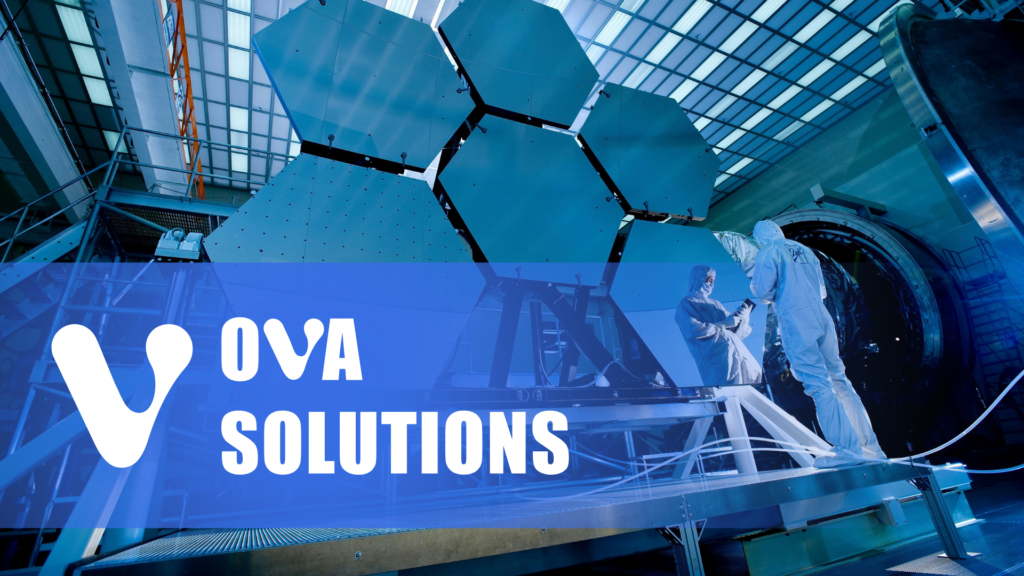Prototype to Production: Lessons from Lider Hardware Companies
In the fast-evolving world of hardware development, taking a product from prototype to production is a challenging but rewarding journey. Prototype to production lider hardware companies—those at the forefront of innovation—excel not only in engineering but also in strategy, speed, and execution.
This article will break down the key lessons from these leaders, offering actionable insights for startups and medium-sized businesses looking to scale their hardware innovations.

Table of Contents
The Prototype-to-Production Pipeline
Moving from a working prototype to full-scale production involves navigating multiple stages, each fraught with its own challenges:
- Prototyping and Validation:
The initial prototype is where your concept meets reality. Lider companies excel at creating functional prototypes that test both feasibility and user experience. They use tools like CAD software, rapid prototyping techniques, and 3D printing to iterate quickly. Key Takeaway: Don’t aim for perfection in the first iteration. Instead, focus on creating a functional prototype to gather real-world feedback. - Design for Manufacturability (DFM):
Once a prototype is validated, it’s crucial to optimize the design for mass production. This step involves simplifying components, reducing costs, and ensuring manufacturability at scale. Key Takeaway: Engage manufacturing partners early in the design phase to identify potential bottlenecks and cost-saving opportunities. - Supply Chain and Vendor Selection:
Prototype to production lider hardware companies build resilient supply chains, often diversifying their suppliers to reduce risks. This ensures that they can meet production deadlines even when disruptions occur. Key Takeaway: Vet suppliers thoroughly, considering not just cost but also reliability and scalability. - Regulatory Compliance and Quality Control:
Particularly in medtech and other regulated industries, ensuring compliance with FDA or ISO standards is non-negotiable. Lider companies integrate compliance checks throughout the development process rather than treating them as an afterthought. Key Takeaway: Start compliance processes early to avoid costly delays down the line. - Scaling Production:
Transitioning from a few prototypes to thousands of units requires robust project management and careful scaling of resources. Key Takeaway: Invest in a strong project management team and leverage tools like PLM (Product Lifecycle Management) systems to streamline scaling efforts.
The Ultimate Cheat Sheet: How Prototype to Production Lider Hardware Companies Dominate in 2025
Here’s a long, detailed spreadsheet with niche industry knowledge from prototype to production lider hardware companies and pro tips for the article:
| Category | Insight/Knowledge | Pro Tip |
|---|---|---|
| Rapid Prototyping | Advanced techniques like SLA and SLS 3D printing allow for intricate geometries with high tolerances. | Use multi-material 3D printing to combine rigid and flexible parts in a single iteration. |
| Material Selection | Material properties like thermal stability, optical clarity, and biocompatibility are critical for medtech. | Test materials in real-world conditions (e.g., sterilization cycles) to ensure durability. |
| Design Iteration | Lider companies use digital twins for simulating performance before physical prototyping. | Invest in CAD tools with integrated simulation to predict failure points early. |
| DFM (Design for Manufacturability) | Simplifying designs reduces manufacturing costs without compromising performance. | Work with manufacturers to validate component designs during the prototyping stage. |
| Supply Chain Optimization | Diversify your supplier base to mitigate risks, especially for critical components. | Negotiate flexible contracts with secondary suppliers to ensure redundancy in sourcing. |
| Quality Control | Automated inspection systems like vision systems improve production accuracy. | Implement in-line testing at every stage of production to catch defects early. |
| Regulatory Compliance | Integrate compliance standards (e.g., ISO 13485) into design and manufacturing processes. | Partner with regulatory experts who specialize in medtech hardware to avoid rework. |
| Testing and Validation | Functional testing under extreme conditions (temperature, humidity, etc.) ensures reliability. | Develop custom testing rigs to mimic actual usage scenarios for optical devices. |
| Scalability | Modular design principles make it easier to scale production without redesigning key components. | Design key subsystems to be reusable across different product lines to save time and cost. |
| Cost Reduction | Outsourcing to Contract Manufacturing Organizations (CMOs) can reduce overhead. | Compare CMOs by their expertise in medtech hardware to find a specialized partner. |
| Lead Time Management | Lider companies use predictive analytics to forecast production delays. | Develop contingency plans for long-lead components to prevent bottlenecks. |
| Environmental Sustainability | Sustainable manufacturing processes and recyclable materials are becoming industry standards. | Use life-cycle analysis tools to assess environmental impact during the prototyping phase. |
| Team Collaboration | Cross-functional teams with engineers, designers, and compliance experts foster innovation. | Use collaborative software like PLM systems to centralize design and compliance documentation. |
| Tooling | Soft tooling is ideal for small production runs; hard tooling is better for scale. | Choose hybrid tooling methods for mid-volume production to balance cost and scalability. |
| IP (Intellectual Property) | Protect unique innovations with comprehensive patents covering both design and utility. | File provisional patents early to secure priority dates while refining designs. |
| Market Feedback | Lider companies incorporate user feedback early by testing prototypes with end-users. | Conduct usability testing sessions with a diverse group of stakeholders to identify unforeseen issues. |
| Production Automation | Robotics and IoT integration enhance production speed and precision. | Invest in cobots (collaborative robots) for tasks requiring flexibility and human interaction. |
| Custom Optics | Custom lenses and coatings can enhance device performance but require precise manufacturing processes. | Partner with optical experts to source prototypes and refine designs before mass production. |
| Risk Management | Risk analysis frameworks like FMEA help identify and mitigate potential failures. | Prioritize high-risk components for additional testing to ensure reliability. |
| Market Positioning | Lider companies use competitive benchmarking to position their devices effectively. | Study successful case studies to adapt winning strategies for your own market. |
| Software Integration | Medtech devices often require integrated firmware for real-time data processing. | Collaborate with software developers to optimize hardware-software interfaces during prototyping. |
| Packaging and Shipping | Packaging must protect delicate optical components during transit. | Use anti-static and shock-absorbing materials in packaging for optical devices. |
| Training and Education | Proper training for assembly teams ensures fewer production errors. | Develop step-by-step assembly guides with visual aids to reduce error rates. |
| Customer Support | Lider companies often provide technical support to address post-launch issues. | Create a dedicated post-market surveillance team to monitor customer feedback and device performance. |
| Future-Proofing | Investing in modular and upgradable designs ensures long-term market relevance. | Plan for integration with emerging technologies like AI and IoT during the design phase. |
| Partnering with CMOs | CMOs bring production expertise but require detailed specifications. | Conduct regular audits of CMO facilities to ensure they meet quality and compliance standards. |
| Optical Coating | High-quality coatings minimize light loss and enhance device performance. | Use AR (anti-reflective) coatings for optimal clarity in medical applications. |
| Thermal Management | Overheating can degrade device performance. | Integrate passive cooling solutions like heat sinks directly into the prototype design. |
How Lider Companies Stand Out
What differentiates the prototype to production lider hardware companies from the rest is their ability to balance innovation with execution. Here are some traits that make these companies leaders in the industry:
1. Speed and Agility
Lider companies move fast, testing and iterating their prototypes at an unmatched pace. They embrace failure as part of the process, using insights from each iteration to refine their designs.
2. Collaborative Approach
They collaborate with a wide network of experts, from design engineers to manufacturing consultants, ensuring no aspect of the process is overlooked.
3. Data-Driven Decision-Making
Leaders use data to inform every stage, from prototyping to scaling. Whether it’s through simulations or customer feedback, data is at the heart of their strategy.
The OVA Solutions Approach: Lessons from Over 150 Projects
As the founder of OVA Solutions, a medtech R&D company specializing in hardware development, I’ve seen firsthand how critical the prototype-to-production process is for success. OVA Solutions has worked on over 150 projects, including groundbreaking devices like smart crutches, a portable ventilator the size of a laptop, and a smart pill dispenser designed to combat the opioid crisis.
Our Key Differentiators:
- Iterative Development:
For every project, we employ rapid prototyping to ensure we’re addressing real-world needs. For example, when developing the portable ventilator, we built over 15 iterations before arriving at a design optimized for both usability and manufacturability. - Early Compliance Integration:
We work closely with regulatory consultants from the start. This approach allowed us to streamline FDA 510(k) submissions for several devices, saving months of delays. - Customer-Centric Design:
Many clients come to us with a vision but no clear roadmap. We collaborate closely with them to align prototypes with market demands, ensuring a smoother transition to production. - Global Manufacturing Expertise:
Our experience spans working with manufacturers across the U.S., Europe, and Asia, allowing us to leverage cost-effective solutions without compromising on quality.
Case in Point:
For a wearable EEG monitoring device, we reduced production costs by 30% by redesigning the prototype for manufacturability and sourcing components from vetted suppliers in Southeast Asia.
Key Challenges and How to Overcome Them
1. Cost Overruns
Problem: Prototyping can become a money pit if not managed properly.
Solution: Use milestone-based budgeting to allocate resources effectively.
2. Manufacturing Delays
Problem: Scaling production often uncovers unexpected bottlenecks.
Solution: Partner with manufacturers who have experience in your industry and conduct small production runs before scaling up.
3. Regulatory Hurdles
Problem: Compliance can be a time-consuming and expensive process.
Solution: Start with a regulatory checklist and engage consultants early in the process.
Here’s an expanded, expert analysis of hardware development challenges and solutions from prototype to production lider hardware companies:
Hardware Development Lifecycle Management
When prototype to production lider hardware companies face development challenges, implementing robust lifecycle management becomes critical. Advanced testing protocols, sophisticated simulation tools, and iterative design methodologies are essential for successful product launches.
Strategic Supply Chain Integration
Today’s prototype to production lider hardware companies must establish resilient supply chains. Key 2025 recommendation: Implement dual-sourcing strategies for critical components and maintain at least 6-month inventory buffers for essential materials.
Advanced Manufacturing Technologies
Modern prototype to production lider hardware companies leverage cutting-edge manufacturing processes. Latest industry insight: Hybrid manufacturing approaches combining traditional methods with additive manufacturing can reduce production time by 40-60%.
Quality Assurance Evolution
Quality control has transformed significantly. Current best practice: Implement AI-powered inspection systems alongside traditional QA protocols, reducing defect rates by up to 85% compared to manual inspection alone.
Risk Mitigation Strategies
Successful prototype to production lider hardware companies excel at risk management. Critical 2025 focus: Develop comprehensive contingency plans for semiconductor shortages and geopolitical supply chain disruptions.
Market Timing Optimization
Product launch timing remains crucial. Updated market guidance: Allow for 30% additional development time compared to initial estimates to account for current global supply chain complexities.
Future-Proofing Development
Leading prototype to production lider hardware companies must anticipate future needs. Essential consideration: Design products with modular architectures to facilitate updates and maintenance throughout the product lifecycle.
These insights reflect current industry standards and emerging best practices in hardware development and manufacturing.
In the rapidly evolving landscape of hardware development, prototype to production lider hardware companies are leveraging advanced rapid prototyping techniques to accelerate their product development cycles. By utilizing methods such as 3D printing and CNC machining, these companies can swiftly iterate designs, enabling faster transitions from concept to production.
This approach not only reduces time-to-market but also allows for more flexible and cost-effective manufacturing processes. For a comprehensive overview of these rapid prototyping methods and their applications, resources like Engineering Product Design offer valuable insights.
Future Trends in Prototype to Production Lider Hardware Companies
As we look toward 2025, several trends are shaping the hardware landscape:
- AI-Driven Prototyping: AI tools are streamlining the design and iteration process, reducing the time from concept to production.
- Sustainable Manufacturing: Eco-friendly materials and processes are becoming a competitive advantage.
- Global Collaboration: Remote work and digital tools are enabling more cross-border partnerships.
Here’s a deeper analysis of key hardware industry trends for 2025 from prototype to production lider hardware companies:
AI Integration in Manufacturing
- Machine learning algorithms now optimize production line efficiency, reducing waste by 30-40%
- Predictive maintenance systems cut downtime by anticipating equipment failures
- Automated quality control using computer vision catches defects with 99.9% accuracy
Advanced Materials Revolution
- Bio-based composites replacing traditional plastics, with a 45% lower carbon footprint
- Self-healing materials extend product lifespans by up to 5 years
- Nanomaterials enable miniaturization while improving performance
Digital Twin Technology
- Virtual replicas reduce physical prototyping costs by 60%
- Real-time monitoring enabling immediate process adjustments
- Simulation capabilities predicting product performance with 95% accuracy
Supply Chain Resilience
- Distributed manufacturing networks reduce single-point failures
- Blockchain tracking improving component authenticity verification
- Local production hubs cutting transportation emissions by 50%
Customization at Scale
- 3D printing enables mass customization without efficiency loss
- Modular design principles reduce assembly time by 35%
- Smart factories adapting production lines in real-time
These trends are reshaping traditional manufacturing paradigms, with early adopters seeing 25-40% improvements in operational efficiency.
Conclusion: Scaling Like a Lider
Moving from prototype to production is a complex journey, but the lessons from prototype to production lider hardware companies can guide you to success. Whether it’s through speed, collaboration, or a focus on compliance, adopting their strategies can significantly increase your chances of success.
At OVA Solutions, we’re passionate about helping businesses navigate this process. With the right expertise and a commitment to excellence, your product can move from prototype to production and become a market leader in its category.
Let 2025 be the year you join the ranks of prototype to production lider hardware companies. Are you ready?

Successfully bringing an optical medical device to market requires mastering every step, from prototyping to large-scale production. This process involves not only technical elements like design and testing but also strategic actions such as regulatory compliance, supply chain optimization, and crafting a competitive go-to-market strategy.
For a deeper dive into these critical stages, check out our comprehensive guide to optical medical device commercialization, which outlines key insights and actionable advice to help you succeed in 2025 and beyond.




 430 Park Ave, New York, NY 10022, USA
430 Park Ave, New York, NY 10022, USA Paevalille tn 6, Office 84, Estonia, Tallinn, 13517
Paevalille tn 6, Office 84, Estonia, Tallinn, 13517 Barykadna St 7, Dnipro, Ukraine, 49000
Barykadna St 7, Dnipro, Ukraine, 49000